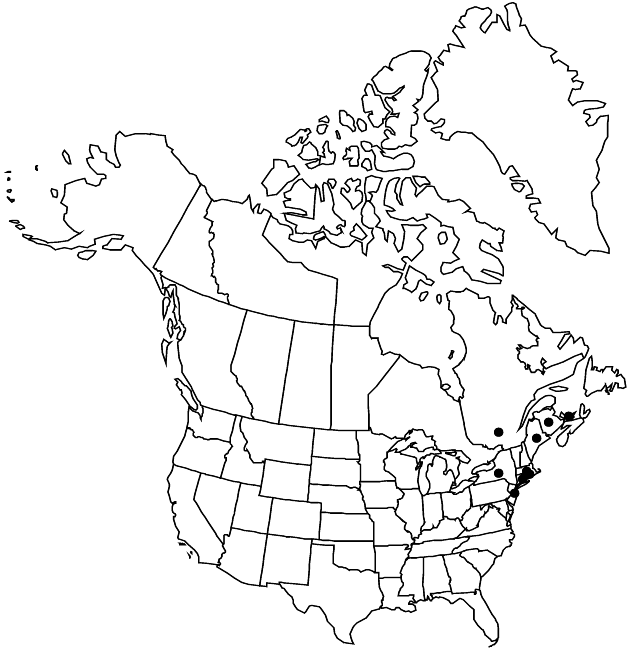Bidens eatonii
Rhodora 5: 92, plate 45, figs. 11–14. 1903.
Annuals, (10–) 25–70 (–150) cm. Leaves: petioles (narrowly, if at all, winged) 10–35+ mm; blades lanceovate to lanceolate, (20–) 35–100+ × 5–25+ mm, sometimes with 1–4 lobes near bases, bases cuneate, margins serrate, seldom ciliate, apices attenuate, faces glabrous. Heads borne singly or in 2s or 3s. Peduncles 10–35+ mm. Calyculi of (2–) 3–5 ± erect, oblanceolate to linear, ± foliaceous bractlets or bracts 7–25 (–70+) mm, margins sometimes obscurely ciliate, abaxial faces glabrous. Involucres usually cylindric to campanulate, rarely hemispheric, (4–) 8–10 (–12) × (4–) 7–9 mm. Phyllaries 5–6, oblong to lanceovate, 8–13 mm. Ray-florets usually 0, sometimes 1–3+; laminae yellow-orange, 2–5 (–10) mm. Disc-florets 7–30+; corollas yellowish, 2.5–3.5 mm. Cypselae blackish to purplish or red-brown,± flattened, sometimes 3–4-angled, narrowly oblanceolate, outer 5.5–10 mm, inner 6.5–11 mm, margins barbed or ciliate (proximally antrorsely, distally retrorsely), apices ± truncate, faces ± 1-nerved, glabrous or sparsely setulose, often ± striate and/or tuberculate, pappi of 2–4 (–5) erect to spreading, antrorsely or retrorsely barbed awns 3–4.5 mm. 2n = 48.
Phenology: Flowering Sep–Oct.
Habitat: Borders of estuaries, marshes, tidal flats
Elevation: 0–10 m
Distribution

N.B., P.E.I., Que., Conn., Maine, Mass., N.J., N.Y., R.I.
Discussion
Bidens eatonii may be better treated as part of B. tripartita.
Selected References
None.